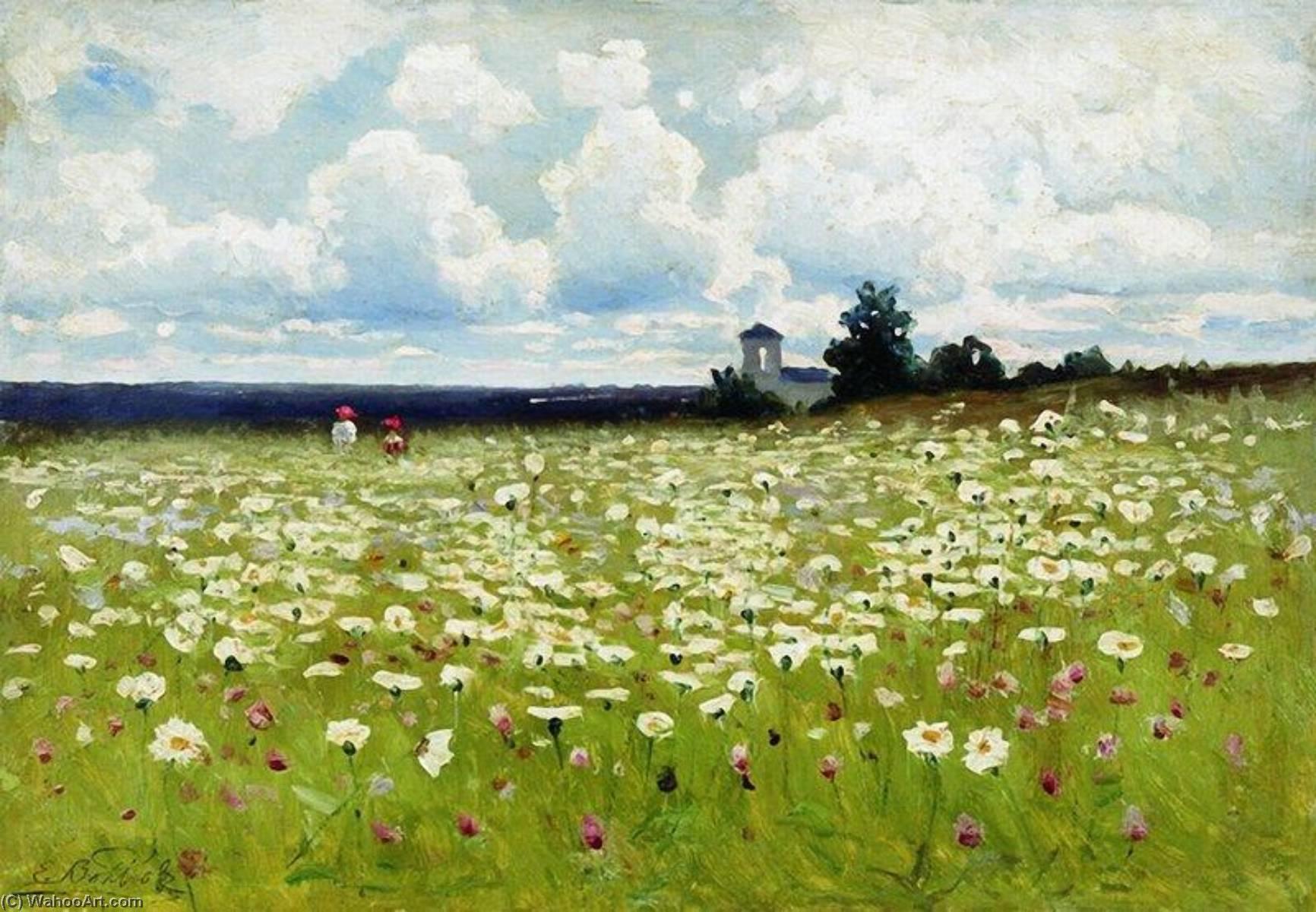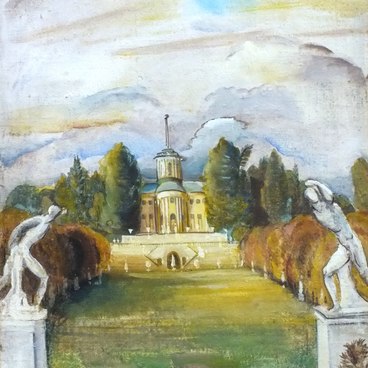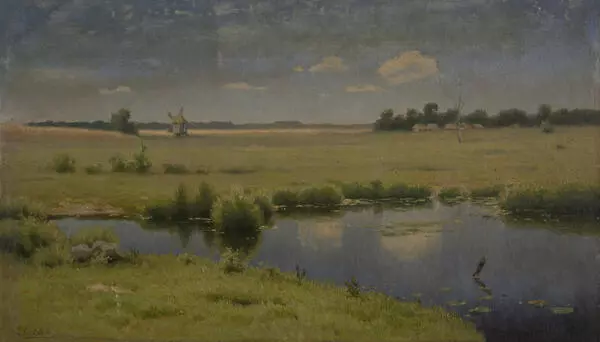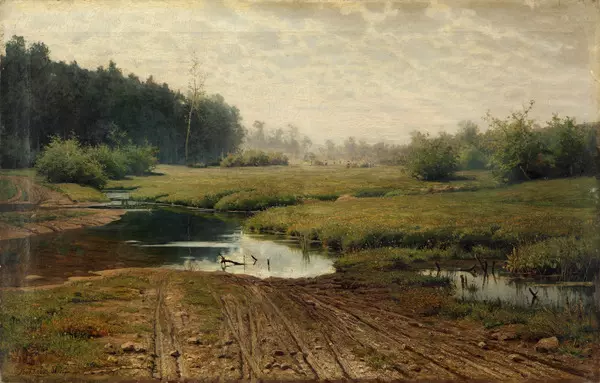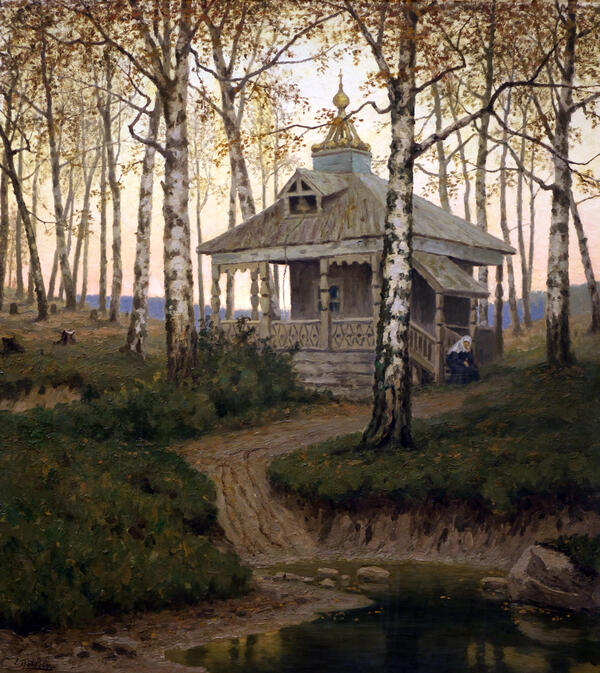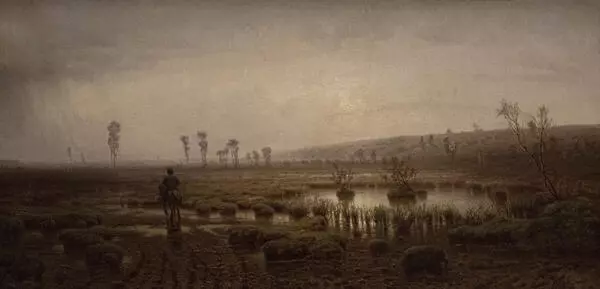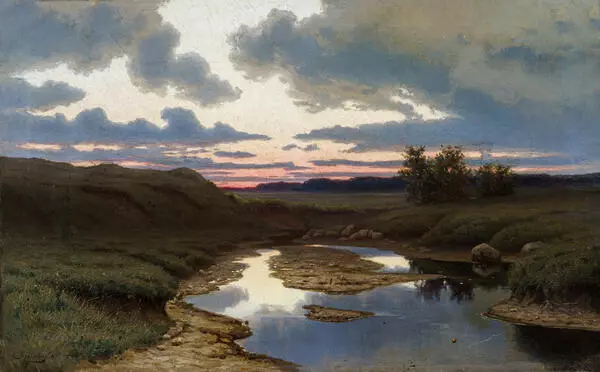The author of the painting The Flower Field, Efim Volkov, who belonged to the Wanderers Association, is one of the brightest representatives of the Russian landscape school. This canvas depicts a modest corner of Russian nature — thickets of field grass on the edge of the forest. This light, but not scorching bright day with light haze on the horizon breathes peace. The same pacification prevails in most of his paintings, with awe of the beauty of northern forests, meadows and marshes.
Efim Volkov was born in 1844 to a family who were far from art. His father was a rural paramedic. Despite his family’s dissatisfaction, he had a passion for painting from an early age. He entered the Drawing School of the Imperial Society for the Encouragement of Artists, where he accomplished the entire four-year course of study in just one year. The next two years he was listed as an external student at the Imperial Academy of Arts, which he soon left. Such short time of academic studies did not prevent Volkov from gaining recognition and popularity.
Up to the beginning of the 20th century, the artist’s fame did not decrease. He received the second and then the first prize of the Society of Encouragement of Artists for his painting In the Forest in Spring, as well as the bronze medal of the London World Exhibition for the work The Swamp in Autumn. After he was elected a member of the Association of Traveling Art Exhibitions, Volkov printed his etchings and accepted orders for illustrations in famous magazines, and made friends with artists Ilya Shishkin and Andrei Schilder. He created several illustrations for Mikhail Lermontov’s poem The Fatherland. Volkov travelled with members of the imperial family to Palestine. The crowning point of his career was his election as a full member and then as an academician of the Academy of Fine Arts.
Not succumbing to either the charm of the East, or the beauty of the Caucasus, Efim Volkov remained faithful to the quiet charm of nature and life of the central part of the country in his works. Avoiding a riot of colors and formidable nature manifestations, year after year, with rare attention to detail, the artist depicted swamps, forests, fields, water and people’s lives on hundreds of canvases. In each season of the year, the life of villages, trees, herbs and water bodies took its place in Volkov’s art.
Draftsman and painter Efim Volkov left us hundreds of canvases depicting Russian fogs, snow, sunrises and sunsets in great detail. His works are housed in many museums including the Tretyakov Gallery, the Russian Museum and many private collections.





